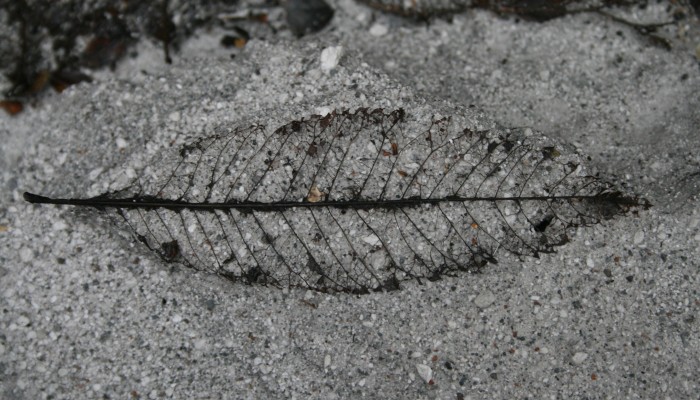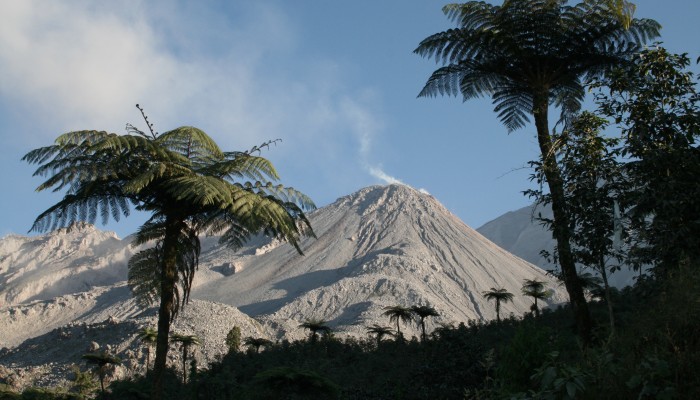Universities are complex, organic institutions. Their heart is the academic hub of scholarship and research, sustained by the ever-changing life-blood of students who come through to learn, to challenge, to grow, and ultimately to leave, having left their mark on those who have taught them. The excitement of working in a University environment is the daily experience of being challenged to think ...[Read More]
Chaiten: anniversary of an eruption
May 1st marks the anniversary of the start of the first historical eruption of Chaiten, a small volcano in southern Chile, in 2008. A lot has been written on the eruption elsewhere, starting with Erik Klemetti’s eruptions blog which first reported on the event at the time. This is an opportunity to share some field photos, which I took during field visits to Chaiten in 2009. At the time of t ...[Read More]
Earth Day – Thin Ice and the inside story of Climate Science
Earth Day, April 22nd, has been chosen as the day for the global launch of a new film on the science behind global environmental change ‘Thin Ice: the Inside Story of Climate Science‘. This is an exciting project, as the filmmakers include Simon Lamb, who has had a successful career as an academic geologist at the University of Oxford, UK, and then at Victoria University of Wellington ...[Read More]
What do you wish that you had learned in Graduate School?
In the UK, the landscape of graduate doctoral training (for the PhD, or DPhil degree) in the field of environmental research is about to be radically reshaped. The main funding agency for PhD training, the Natural Environment Research Council, is currently running a competition for Universities and other Research Organisations to run coordinated doctoral training programmes from next year (Octobe ...[Read More]
Conference report – EGU highlights, Day 4
Large international science conferences are extraordinary events. For a week at a time, scientists emerge from their offices and laboratories and join a throng of thousands, negotiating their way through tens of thousands of presentations across multiple parallel sessions. For many of those attending, the scale of the event is less important, though, than the opportunity the meeting presents for s ...[Read More]
Professor John Barry Dawson, 1932-2013
I learnt this week the sad news of the death of Barry Dawson, Emeritus Professor in the School of Geosciences at the University of Edinburgh. I had the great fortune to accompany Barry into the field in 1988, while I was still studying for a PhD, and had the pleasure of spending many enjoyable moments with him subsequently, whether in the field, at meetings, or just in passing. This seems like an ...[Read More]
A Portmanteau of Natural Hazards
Last week, the UK’s Natural Environment Research Council (NERC) launched an over-arching programme in Natural Hazards, a network called PURE (Probability, Uncertainty and Risk in the Environment). This post is a very short attempt to navigate the maze of acronyms of projects that are either linked to PURE, or to other related initiatives in Natural Hazards in the UK. PURE itself is a network ...[Read More]
Santiaguito Volcano: Ninety Years and Counting.
Santiaguito volcano, Guatemala, burst into life in 1922 and is now the second longest continuing eruption. It has outlasted both Stromboli (Italy) and Sangay (Ecuador), both erupting since 1934, and is only outdone by Yasur (Vanuatu), which has been erupting at least since 1774, when first visited by Captain Cook. These long-lived eruptions give us an unusual opportunity to use the slowly-extruded ...[Read More]
Polygons, columns and joints
Over on her Georney‘s blog, Evelyn Mervine has recently posted a nice piece with some spectacular images of columnar jointing. This seemed like a good opportunity to dust off some field photos, with some more examples of polygonal joint sets in lavas from a variety of settings, to illustrate the diversity of forms that cooling-contraction joints may take in volcanic rocks. The first example ...[Read More]
Chilean volcanoes: shaken, but not always stirred?
November 7th marked the 175th anniversary of one of the largest earthquakes to have struck northern Patagonia. The earthquake, which is estimated to have had a magnitude of 8, had an epicentre close to Valdivia, and was accompanied by significant ground shaking and subsidence as far south as Chiloe island, and a major tsunami that reached Hawaii. The eyewitness reports of the time have been well ...[Read More]


